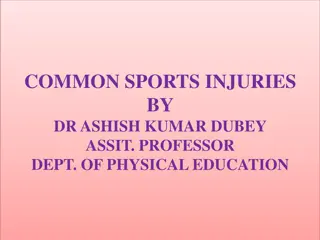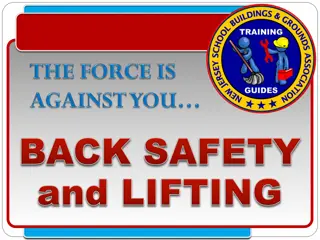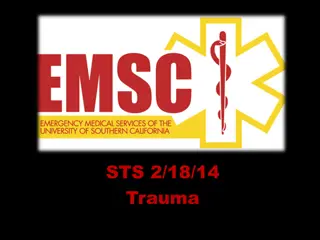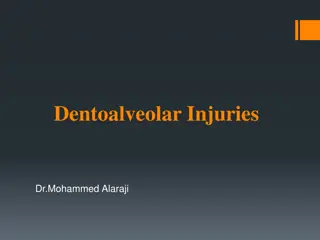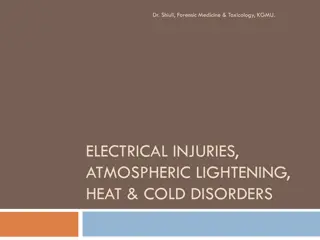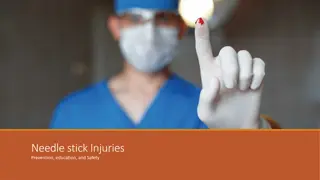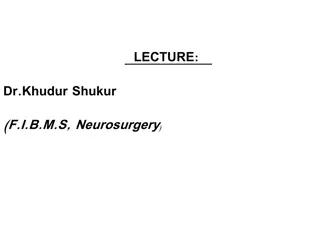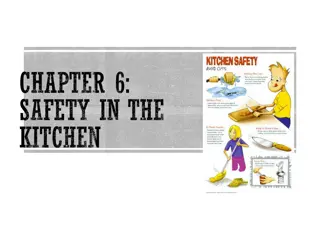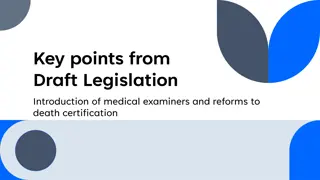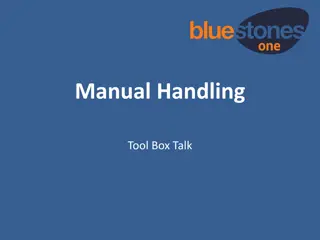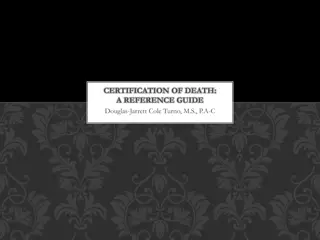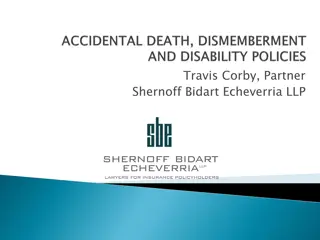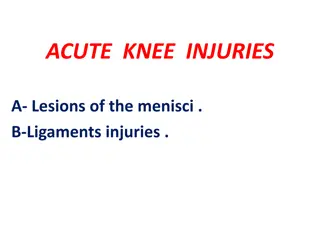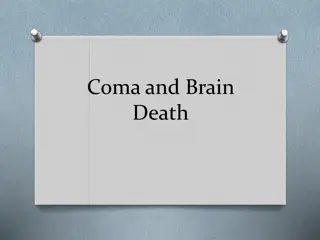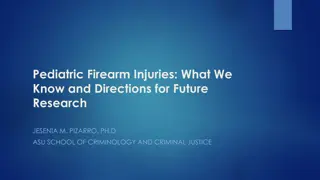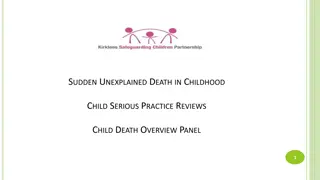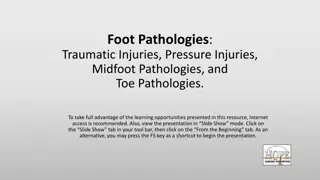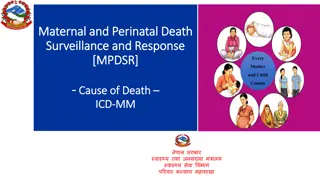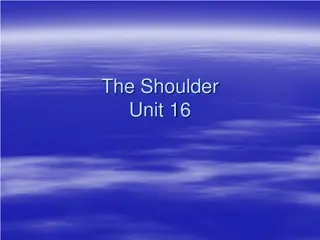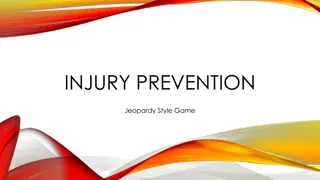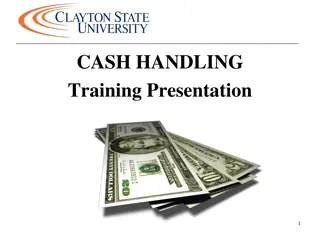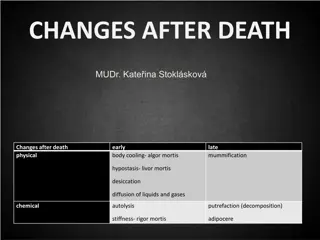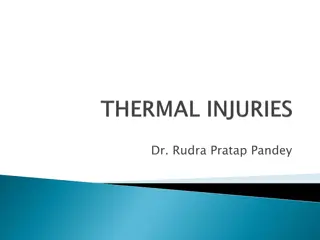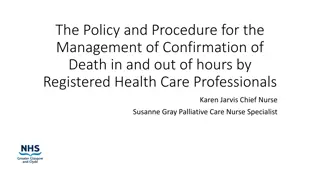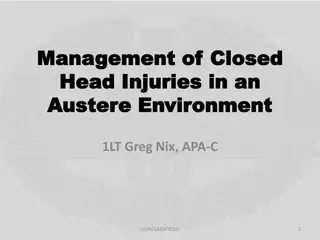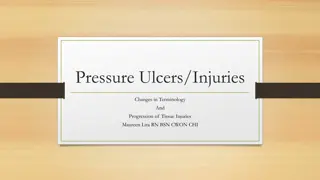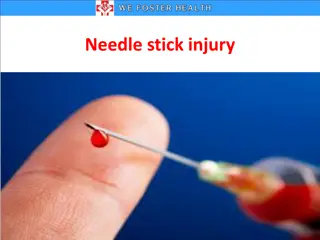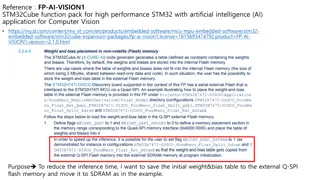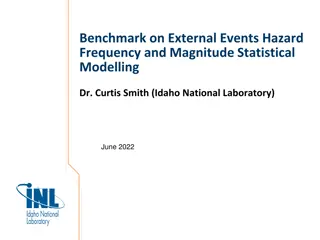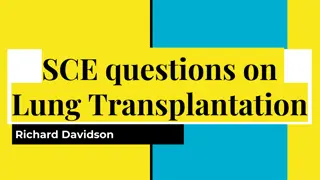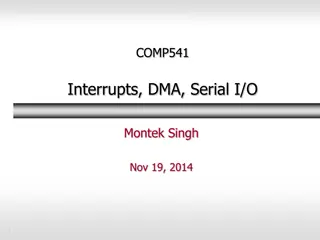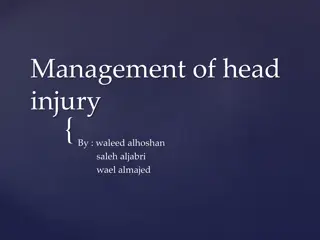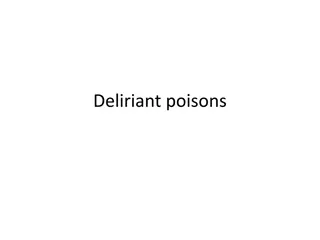Guide to Handling Injuries, Poisonings, and External Causes of Death in Coronial Systems
In countries with a coronial system, doctors must report deaths from unnatural causes to the coroner before completing the MCCD, known as "unnatural deaths." Certification and documentation of the MCCD vary based on the presence of attending medical officers or medico-legal officers. Understanding the external cause concept is crucial, including injury mechanisms and intents. Properly listing the underlying cause in cases of death due to injury or violence is essential. Follow local instructions and procedures for medico-legal investigations.
- Coronial Systems
- MCCD Certification
- Unnatural Deaths
- External Cause Concept
- Medico-Legal Investigations
Download Presentation

Please find below an Image/Link to download the presentation.
The content on the website is provided AS IS for your information and personal use only. It may not be sold, licensed, or shared on other websites without obtaining consent from the author. Download presentation by click this link. If you encounter any issues during the download, it is possible that the publisher has removed the file from their server.
E N D
Presentation Transcript
Injuries, Poisonings and External causes of death In countries where coronial system is in place doctors may need to inform the coroner about deaths from causes in this category before completing the MCCD These are often referred to as "unnatural deaths" What are the instructions in your own country?
Who certifies/documents the MCCD? If there is an attending medical officer at death, the certifying officer is the attending medical officer/physician If there is no attending medical officer at death the certifying officer is the Local Health Officer In medico-legal cases, the certifying officer is the medico- legal officer/Judicial Medical Officer How about your country?
Injuries, Injuries, Poisonings Poisonings and and External External causes of causes of death death
Death with Medico-Legal Implications Local Health Officer Local Civil Registrar Always follow the local instructions & the process Medico-legal investigation
The external cause concept The classification of; environmental events, circumstances and conditions as the cause of injury, poisoning & other adverse effects. For certification we are interested in: The injury The mechanism (what is the external cause) The intent (accident, suicide, homicide)
Injuries, poisonings and external causes of death Patient is usually treated by doctor for the Immediate cause / Terminal event of death (e.g. Intracranial hemorrhage, ruptured liver, effect of the poison etc.) When death occurs as a consequence of injury or violence, the mechanism (the circumstance of the injury) should always be listed as the underlying cause.
Example - 1 Death resulting from cerebral compression due to subdural haematoma after a fall from a tree
Sequence of events leading to death Death Death Terminal Event Immediate cause of death Cerebral Cerebral compression compression Subdural Subdural Haematoma Haematoma Underlying cause of death Starting Point Fall from a tree Fall from a tree
Deaths due to External Causes Injuries are some of the most poorly certified causes of death in the Pacific Islands. Most end up as injury non-specified In order to record the underlying cause of death we need both: 1. THE INJURY + 2. HOW THE INJURY OCCURRED + 3. THE MANNER OF THE DEATH
Injuries, poisonings and external causes of death The external cause should be described in as much detail as possible; for example, motor traffic accident is not sufficiently accurate; however, pedestrian hit by motor car in a public highway is both clear & accurate.
1. The INJURY EXAMPLES Bleeding from a head wound Poisoning Crush injury to chest Medical certificate examples: 1. Toxic shock due to 2. Septicaemia 3. Infected wound (right leg) 1. Exsanguination 2. Penetrating stab In both cases we need MORE information on how the injury occurred
2. HOW the INJURY OCCURRED EXAMPLES INCLUDE Ingestion of chemical/ fish/ etc - specify what was ingested if known Stabbing wound Hanging Drowning MVA - detail of the type of vehicle, and passenger/driver/ pedestrian if possible. Fall specify if this was a fall off something or something falling onto them and what this object was
2. HOW the INJURY OCCURRED (cont d) Medical certificate examples: 1. Toxic shock due to 2. Septicaemia 3. Infected wound (Right leg) 4. Crush injury from Motor bike crash 1. Exsanguination 2. Penetrating stab wound to abdomen 3. Spear gun injury
3. Manner of death Should be recorded for all external causes Options are: (NATURAL) Accidental Intentional self harm Assault Legal intervention Not known Common issues include: Hanging (should only be counted as suicide if this is specifically noted) Drowning Poisoning (very different codes for accidental ingestion vs deliberate self- harm); however not known ends up in a separate category of injury other in the General mortality list
3. MANNER Of DEATH Medical certificate examples: 1. Toxic shock due to Septicaemia 2. Infected wound (Right leg) 3. Spear gun injury 4. Crush injury from Motor bike crash (accident) 1. Exsanguination 2. Penetrating stab wound to abdomen 3. Spear gun injury (accident self inflicted) UCOD: Motorbike crash UCOD: Accidental injury
3. Manner of death Unless legislation has assigned determining the manner of death elsewhere (such as a coroner or police investigation), this should be included on the medical certificate by the certifying doctor to the best of their ability Things to consider when determining the manner of death : The type, location and characteristics of the injury itself Documented history (ie previous self-harm intents) Family report/ witnesses etc Evidence of intent to act (saying goodbye, closing accounts etc) Where there is concern (e.g. Assault) follow local policy on referring cases to medical supervisor and/or police
POISONING (intentional vs Non-intentional) Multiple possibilities when someone is recorded as having died from poisoning This usually means either: Accidental ingestion of chemical or toxic substance (child ingesting cleaning fluid, mushrooms, fish toxin), smoke inhalation, overdose of a recreational drug etc. Intentional self-harm - i.e. paraquat poisoning Adverse effect in medical care (e.g. anaesthetic reaction) The substance and means by which it was consumed (ingested/ inhaled/ injected etc) should be noted if known; as well as the intent.
Alcohol Alcohol is a leading cause of morbidity and mortality While it can cause death due to an acute poisoning it is more common that alcohol use leads to long term health problems This means it can be left off the certificate Add alcohol use, including as the underlying cause of death if a factor in death
Injuries, Poisonings & External causes of death In a case of suicide, simply entering suicide is insufficient; the method of suicide should be entered For example, Suicidal death by hanging is a clear description Certifying suicide can be a sensitive and difficult issue - deaths are considered preventable - more likely to occur in younger people - data is important for public health interventions Any country sensitivities to note?
Deaths due to a Natural disaster When a death occurs due to a natural disaster the cause should be specified as normal. However if the physician believes that the death was related to the natural disaster -this should be recorded in the contributory causes The collection of statistics on the impact of a natural disaster is essential, but often this information cannot be obtained from the Health services and comes from unverified reports through the Emergency Management System.
Resources CDC Medical examiners handbook https://www.cdc.gov/nchs/data/misc/hb_me.pdf CDC guidelines for determining suicide: https://www.cdc.gov/mmwr/preview/mmwrhtml/00001318.htm US instructions for completing the medical certificate in cases of injury or poisoning (external causes) https://www.cdc.gov/nchs/data/dvs/red_form.pdf US instructions for completing the medical certificate after hurricanes https://www.cdc.gov/nchs/data/dvs/hurricane_certification.pdf



